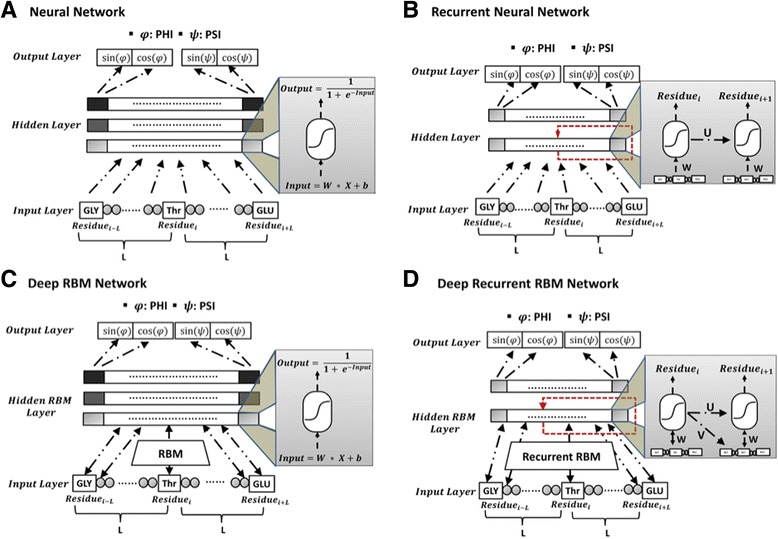Fig. 3.

The architectures of four deep learning networks for torsion angle prediction. a Deep neural network (DNN). Features in the input layers are mapped to the hidden layers by sigmoid functions, from hidden layer to hidden layer, and finally propagated to the output layer for prediction. The weights in the network are randomly initialized according to the uniform distribution. The architecture is fine-tuned by back-propagation with SFO algorithm. b Deep recurrent neural network (DRNN). The inputs are connected to the first hidden layer by weight matrix W, and the neighboring positions in the first hidden layer are inter-connected by weight matrix U. The parameters are randomly initialized. The architecture is optimized by back-propagation through time with SFO algorithm. c Deep restricted Boltzmann (belief) network (DRBM). The layers are stacked with each other through Restricted Boltzmann Machine. And the weights are pre-trained by RBM. Predictions are made by forward pass and the network is optimized by back-propagation with SFO algorithm. d Deep Recurrent RBM network. Forward-propagation and backward-propagation follows the same strategy as deep recurrent neural network, while the parameters are pre-trained by RBM
